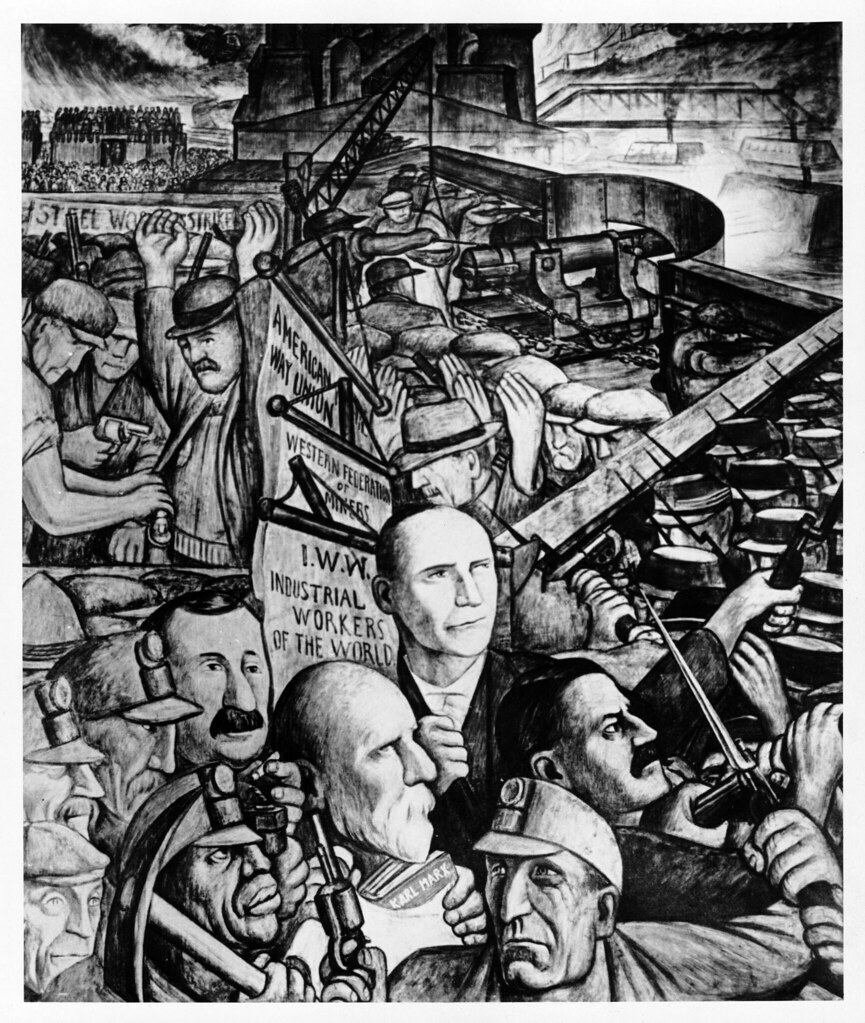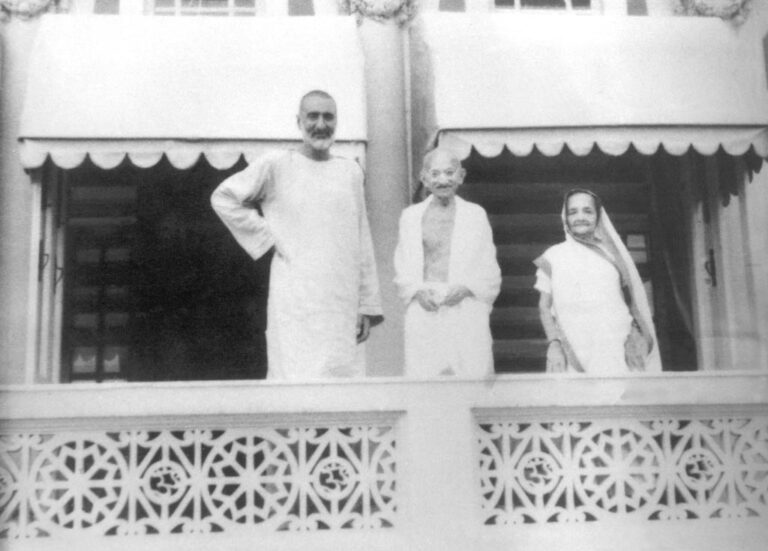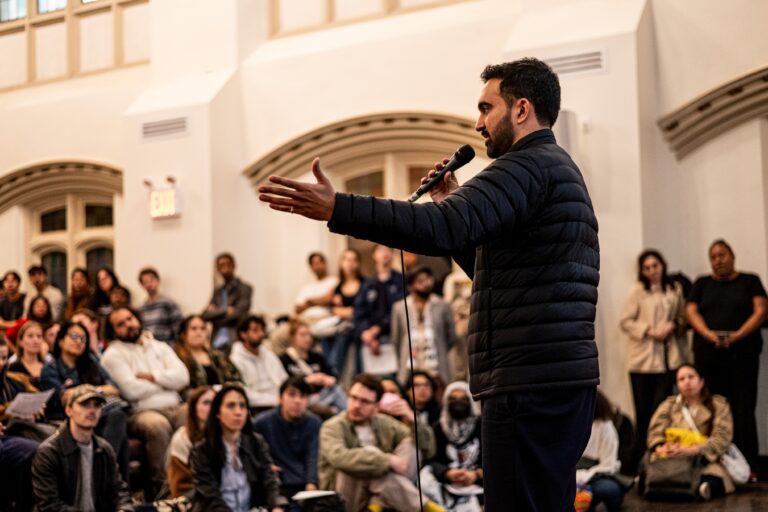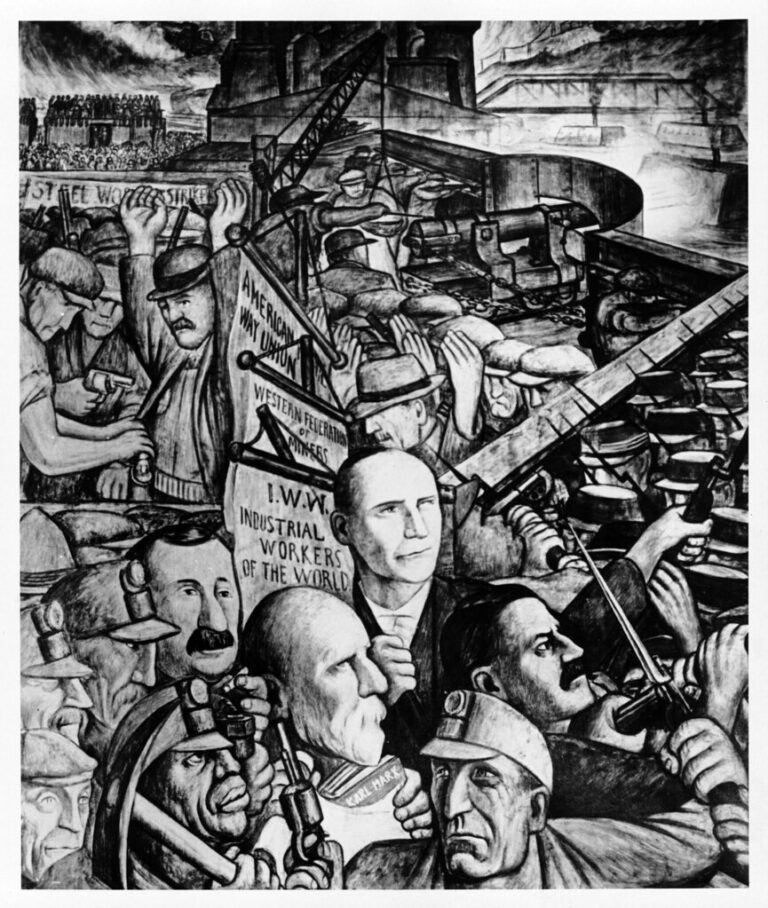
The fall of Stalinism did not signify the demise of Communism. To equate the two is to misinterpret history and ideologically capitulate to a neoliberal narrative that aims to suppress the revolutionary potential of communism beneath the burden of bureaucratic chaos. Indeed, the prevailing discourse of neoliberal counterreform seeks to not only naturalise capitalism as the ultimate endpoint of history but also to retroactively recast the history of communism as a linear trajectory culminating in totalitarianism. In this distorted account, Marx leads to Lenin, Lenin to Stalin, and Stalin to gulags, purges, and widespread repression. This narrative, however, is less a reflection of historical reality than a potent ideological myth—one that conflates the failure of bureaucratic despotism with the failure of a revolutionary project that has yet to fulfil its emancipatory potential.
To comprehend the Stalinist regime as a bureaucratic distortion of Communism, one must start from the premise that revolutionary theory should be interpreted within the context of the epoch it aims to transform. Marxism, akin to any dynamic social theory, is not a fixed script but a critical framework, open to revision, contestation, and evolution. As Karl Marx himself stated, “Men make their own history, but they do not make it as they please; they do not make it under self-selected circumstances, but under circumstances existing already, given and transmitted from the past.” (The Eighteenth Brumaire of Louis Bonaparte). This materialist perspective on history necessitates that we situate Stalinism not within Marxism but in the historical crises confronting early Soviet society.
The historical context of early Soviet Russia—a society devastated by war, international isolation, economic backwardness, and internal civil strife—shaped the political choices and limitations faced by the revolutionary leadership. However, these material constraints alone do not fully account for the rise of Stalinism. What emerged in the USSR during the 1930s was not an inevitable outcome of Marxism or Leninism but rather a counterrevolutionary process rooted in the formation of a bureaucratic caste that ultimately undermined the revolutionary aims it professed to uphold.
The very notion of a bureaucratic counter-revolution introduces an essential distinction between revolution and its degeneration. As Joseph de Maistre insightfully observed in the context of the French Thermidor, a counter-revolution is not merely a revolution in reverse—it is the negation of revolution. This concept is useful for analysing Stalinism, which did not merely betray certain values of the Russian Revolution but systematically reversed its emancipatory content. While the revolution aimed to dismantle the apparatus of class domination and establish workers’ self-rule, the Stalinist regime consolidated a new ruling stratum—an administrative elite that wielded state power over the working class in the name of socialism.
Leon Trotsky’s analysis remains pivotal in understanding this context. He identified Lenin’s death in 1924 as the onset of the Thermidorian reaction, although he observed that the counterrevolution was not fully realised until the early 1930s. This era witnessed a significant transformation of the Soviet state: the emergence of Stalin as an unassailable autocrat, the dismantling of internal party democracy, and the implementation of unprecedented repression during the Great Purge. “The bureaucracy conquered something more than the Left Opposition. It conquered the Bolshevik party. It defeated the program of Lenin, who had seen the chief danger in the conversion of the organs of the state “from servants of society to lords over society.” It defeated all these enemies, the Opposition, the party and Lenin, not with ideas and arguments, but with its own social weight. The leaden rump of bureaucracy outweighed the head of the revolution. That is the secret of the Soviet’s Thermidor” Trotsky observed in The Revolution Betrayed further observed “The deposed and abused bureaucracy, from being a servant of society, has again become its lord.”
Moshe Lewin’s empirical research in Russia/USSR/Russia: The Drive and Drift of a Superstate further elucidates the bureaucratic expansion of the Soviet apparatus during this period. The development of a vast administrative structure, populated by loyal functionaries and insulated from popular accountability, signified a significant departure from the original revolutionary aims. The working class, which was ostensibly the ruling class in a socialist state, was deprived of political power, and the Soviets—the councils that had once embodied workers’ democracy—transformed into instruments of centralised control.
Hannah Arendt, in The Origins of Totalitarianism, offers another important perspective. According to Arendt, totalitarian regimes like Stalin’s arise not merely from ideology but from a specific fusion of state machinery, mass atomisation, and bureaucratic dominance. She contextualises the rise of Stalinism in the early 1930s by identifying a shift from a repressive regime to one based on the systematic mobilisation and annihilation of autonomous political life. Arendt’s ideas highlight that Stalinist totalitarianism was something new and different; it didn’t just naturally come from Marxist beliefs but was a shocking type of government that arose due to specific historical events and problems in the system.
Rosa Luxemburg had earlier warned of bureaucratic centralism’s dangers:“Freedom only for supporters of the government, only for the members of one party—however numerous they may be—is no freedom at all. Freedom is always and exclusively freedom for the one who thinks differently. Not because of any fanatical concept of ‘justice’ but because all that is instructive, wholesome and purifying in political freedom depends on this essential characteristic, and its effectiveness vanishes when ‘freedom’ becomes a special privilege.” Her critique was not an abandonment of socialism but a defence of its democratic spirit against creeping authoritarianism.
To treat the Stalinist regime as synonymous with communism is to obliterate these nuances. It erases the vibrant debates, ideological struggles, and revolutionary alternatives that existed within the socialist movement. It stifles the remembrance of individuals such as Trotsky, Bukharin, Luxemburg, and numerous ordinary militants who opposed the bureaucratic shift. Moreover, it narrows the horizon of political imagination, as if the only choice humanity faces is between market capitalism and authoritarian socialism.
The consequences of this ideological foreclosure are profound. The Stalinist counter-revolution did not merely deform socialism in the Soviet Union; it also corrupted the international workers’ movement. The USSR’s foreign policy interests subordinated communist parties worldwide, often at the cost of local revolutionary potentials. From the betrayals in Spain and Germany to the suppression of dissent in Eastern Europe, the shadow of Stalinism distorted the global image of Communism and rendered it synonymous with oppression rather than liberation.
Yet, despite this dark legacy, Communism remains a living tradition. Its core principles—equality, collective ownership, and the abolition of class society—continue to inspire new generations facing the crisis of capitalism. As Georg Lukács once wrote, “The essence of history lies in the dialectic of freedom.” The task is not to abandon Communism but to rescue it from the ruins of Stalinism.
Antonio Gramsci’s reflections from prison emphasised the need for critical Marxism to remain adaptable and self-reflective: The crisis consists precisely in the fact that the old is dying and the new cannot be born; in this interregnum a great variety of morbid symptoms appear.” Stalinism, in this view, is one such symptom—not the fulfilment of Marxism but its deformation in a moment of historical blockage.
To reclaim Communism involves a critical engagement with its history, learning from its failures, and resisting simplistic binaries. It asserts that the vision of a classless, stateless society—albeit postponed—remains the most coherent response to the contradictions inherent in capitalist modernity. Eric Hobsbawm emphasised that understanding the 20th century necessitates taking into account the Russian Revolution and its aftermath. Equally, the 21st century cannot be envisioned without rethinking and revitalising the revolutionary aspirations that inspired that pivotal event.
The future of Communism lies not in the nostalgic revival of past regimes, but in the creative reinvention of its emancipatory content. This means grounding theory in practice, anchoring ideals in democratic self-organisation, and remaining vigilant against the ever-present danger of bureaucratisation. The spectre of Stalinism should not paralyse us; rather, it should sharpen our resolve to build a socialism that is genuinely democratic, participatory, and human-centred.
As Ernest Mandel put it, “Socialism will be democratic, or it will not be at all.” A reimagined Communism must reject the bureaucratic authoritarianism of the past and embrace the principles of popular empowerment, transparency, and pluralism.
In this sense, Communism is not merely a relic of the past but a project for the future. It is not confined to the failures of the 20th century; rather, it is open to the possibilities of a new century shaped by collective struggle and radical hope. The bureaucratic distortions of Stalinism should be regarded as a cautionary tale—not a definitive verdict. The horizon of human emancipation remains open, and communism, when properly understood and reimagined, continues to serve as its most compelling compass.
However, it would be overly simplistic to blame Stalin, as an individual, for the rise of bureaucracy. He represented the petty bourgeois bureaucratic tendencies inherent in the system. Below, an approach is presented to critically understand the social and political foundations of the Thermidorian bureaucracy that took power in the USSR after Lenin.
1. The Social Basis of Bureaucratic Power
War, famine, and disease devastated the proletariat, the putative ruling class of the new Soviet state. These were not merely external calamities—they were the rude conditions under which the bureaucratic caste germinated. The promise of workers’ rule had been snuffed out by the savagery of the Civil War, the horror of foreign intervention, and the weariness of the proletariat. The once-vibrant organs of proletarian rule, the Soviets, found themselves drained of life. Administrative organs proliferated, manned not by workers but by functionaries who owed allegiance to the new order.
Lenin stated that socialism should be controlled by the working class themselves. But instead, there emerged a group of managers, a new privileged elite. Trotsky, in The Revolution Betrayed, laid out how the bureaucracy emerged as a class interested in nothing more than its own power. They spoke of the revolution, but only to obscure its true meaning. They took over the political landscape intended for workers and peasants and turned it into a closed club that claimed power for itself.
The transformation of the Soviet state into a bureaucratic dictatorship and not a workers’ state did not occur overnight. It was not inevitable due to history. It occurred because there was a failure of workers’ democracy. Bureaucrats quickly filled the vacuum and established their monopoly, placing themselves above the people they were supposed to serve.
Trotsky’s insight still holds: the bureaucracy, instead of being at the service of the working class, became its enemy. The bureaucratic faction that took control in its stead defied the Soviet state’s promise to be of, by, and for the workers. They pledged the revolution, yet they constructed a new form of oppression in practice. The state was not vanishing, as Marx had hoped; it was growing in ways that restricted the revolution’s democratic possibilities.
2. Isolation and the Betrayal of Internationalism
Revolution in Russia was never meant to be a solo undertaking. Marxism is fundamentally internationalist. Lenin and Trotsky depended on revolutions in Germany, Hungary, and other places to aid and facilitate the struggling Soviet Republic. But those revolutions failed—by social-democratic betrayal and fascist terror. The failures of the German Revolution in 1918 and the Hungarian Soviet Republic in 1919 left the Soviet Union isolated in an unfriendly capitalist world. All that remained was an encircled isolationist workers’ state. And out of that isolation emerged the poison.
Rather than mobilising for the international fight, Stalin hoisted the flag of “socialism in one country”—a nationalist perversion of Marxism, if such a thing existed. It was not a doctrine of power but of capitulation. Capitulation to backwardness, to bureaucracy, to the nation-state. Trotsky raged against this treachery. Socialism is not a citadel to be defended; it is a fire to be fanned. Stalin smothered that fire for the sake of diplomatic finagling and backroom politics. International revolution was no longer the objective but a danger to Soviet stability. The bureaucracy regarded foreign revolutions not as comrades-in-arms but as potential burdens.
Stalin’s “socialism in one country” ideal conflicted with the central principle of Marxism, that socialism would be possible only if the revolution spread to other nations. This decision damaged the future of the Soviet Union and annihilated labour movements throughout the world. Stalin’s government ceased to be an instrument for assisting workers and turned into one for preserving authority in the Soviet state, discrediting the worldwide struggle for change.
3. The Civil War and Permanent Repression
The harsh civil war dominated the first decades of the Soviet Union. The Bolsheviks were not only combating the White Guards but also many internal foes: different socialist groups, anarchists, and even groups within their own ranks. In this brutal fight for survival, the Bolsheviks repressed other socialist groups, like the Left Socialist Revolutionaries, Mensheviks, anarchists, and even some mutinous Bolsheviks. Lenin, Trotsky, and others thought these actions were temporary exceptions necessary to keep the revolution alive. But as Daniel Bensaïd points out, these “exceptions” quickly became the rule.
Repression did not abate with triumph—it became the new standard. Oppression of political opponents, limitations on civil rights, and suppression of dissent became the staples of Soviet existence. The Soviets, once the embodiment of workers’ democracy, were reduced to mere rubber stamps for the leaders’ dictates. The party became the only political voice, and even within it, dissent was stifled. Luxemburg’s prophecy lingered ominously: in the absence of freedom and diversity of thought, socialist organisations began to deteriorate internally. The demise of political diversity brought an end to workers’ democracy.
Stalin formalised the cultural transition to centralisation and military discipline, which was crucial during the civil war era. Bureaucracy flourished in an environment of suspicion and authoritarianism where straying from the party line was considered counter-revolutionary. Bureaucracy’s expansion, first marketed as an emergency, soon became the standard of Soviet governance.
4. Vanguard Becomes Substitution
Trotsky had believed that the party must be the leadership of the class. But leadership can only be legitimate if it is derived from and responsive to the class. When the leadership disregards the class, it takes on the role for itself. This is what happened with the Bolshevik Party under Stalin: it became disconnected from the working class, and instead of working to meet the requirements of the workers, it started to work in their place, speaking for them.
Bensaïd described this change concisely: the party was no longer the bridge between the class and the state. It became the state. The bureaucracy then took control of the party. Substitution was replaced by takeover. The class was no longer the force in history—it became something to be manipulated. It was a tragic development. The revolutionary party, rather than being the voice of the oppressed, became an instrument of oppression.
This was not Marxism. This was a betrayal of the revolutionary project. Marx always knew that the revolution was not the work of a small group but of the working class as a whole. When the revolutionary party becomes an instrument of oppression, then it is no longer revolutionary. It has become a symbol of the counter-revolution.
5. The Culture of War and the Logic of Terror
The war had shaped the initial Soviet regime, but Stalin institutionalised that wartime mindset. Centralisation, secrecy, and suspicion—these were virtues. The logic of repression was made dogma. The Great Terror was not an error. It was the natural outcome of a bureaucratic regime that saw any hint of autonomy, or disaffection, as treason. Revolutionaries were executed. Old Bolsheviks, men who had lived through 1917, were tried and put to death.
This was the counter-revolution in all its glory. It used Lenin’s rhetoric to destroy all that he represented. It was a necromancy regime—resurrecting the dead language of Marx to legitimate a living horror. The repression was not merely a reaction to dangers from within or without; it was a component of the bureaucracy’s inherent requirement to maintain its monopoly on power. “Revolutionary terror” was now a means of bureaucratic consolidation rather than the defence of the revolution.
6. Bureaucracy as a Social Relation
Stalinism cannot be reduced to the individual figure of Stalin; that would be overly simplistic. The bureaucracy was more than just a group of corrupt individuals; it formed a system and a social relationship. It was a parasitic organisation that arose out of defeat, scarcity, and fear. Trotsky called it Thermidor, a counter-revolution emanating from within. Although the bureaucracy did not own the factories, it exercised control over them. They did not hold titles of nobility, yet they acted like aristocrats. Their interests fundamentally conflicted with those of the working class. Each strike, each protest, and each demand for democracy posed a challenge to their hegemony, and thus they suppressed them all.
We cannot solely attribute the emergence of the Soviet bureaucratic class to individual mistakes. Instead, it symbolises a systemic defect, a perversion of socialist principles by a previously marginalised and oppressed group. The objectives of the bureaucracy often stood in stark contrast to those of the working class. This new class sought not the dissolution of the state, but rather the consolidation and extension of its control over it.
7. Stalinism Betrays the World Revolution
Stalinism was not merely a Russian phenomenon. It destroyed revolutions globally. In Spain, the Stalinist line suffocated the revolution in the cause of anti-fascist unity. The ultra-left sectarianism of the Stalinized Comintern in Germany paved the way for Hitler. The Stalinist betrayal had disastrous consequences in China. The Comintern was used as an instrument of Soviet foreign policy. Revolutionaries were offered on the altar of diplomatic arrangements. Marxism was reduced to a geopolitical doctrine.
Stalinism converted Marxism into a tool for the state to ascend to power, by emphasising national interests at the expense of international unity. This was in contrast to the overall theme of Marx’s revolutionary theory, which declared that the liberty of workers could not be obtained separately. The Stalinist state converted revolution into a tool of ascending to power in global politics at the expense of the fight for global workers’ rights, rather than bureaucratic control.
8. The Self-Destruction of the Party
Stalin did not merely murder his opponents. He devoured his ranks. By 1939, almost all of Lenin’s original Central Committee members were dead. What was left was not a party. It was an apparatus. It was a system of obedience and loyalty. The party that once stormed the Winter Palace now exists solely to protect Stalin’s bunker.
Engels predicted that the state would have to atrophy. Under Stalin, it spread like a metastasis. It grew in total. The party was not so much a revolutionary tool as an apparatus of repression. It no longer functioned for the interests of the workers but for the interests of the bureaucracy.
The Leninist Party
Before exploring the specifics of how the Fourth International developed a distinct political approach, it is essential for readers to comprehend the true nature of the Leninist party. In this brief note, I intend to clarify the essence of the Leninist party. The significant work by Paul Le Blanc, Lenin and the Revolutionary Party, has greatly influenced my understanding of the genuine and democratic characteristics inherent in the Leninist party.
The concept of a Leninist party is frequently one of the most misunderstood in contemporary political theory. It is often invoked to justify authoritarianism or dismissed as a remnant of a bygone revolutionary era; thus, it is more commonly portrayed through caricature than through a serious examination. Le Blanc’s book, Lenin and the Revolutionary Party, serves as a rebuttal to such misrepresentations by returning to Lenin’s original writings, practices, and the political context of his time. Through meticulous historical scholarship and Marxist analysis, Le Blanc recovers the true essence of Leninism: a militant, democratic, and theoretically informed organisation that is deeply rooted in the working class.
The following essay explores the true nature of the Leninist party in line with Le Blanc’s analysis. It includes an examination of the party’s origins, internal organisation, and revolutionary role, as well as a focus on the dialectical relationship between democracy, centralism, and the self-emancipation of the working class, as conceptualised by Lenin.
I. The Marxist Origins of Leninism
Paul Le Blanc begins his analysis by putting Lenin in the context of the Marxist tradition. Lenin’s thought is less a break from Marx than an innovative elaboration of the Marxist theories of class struggle, the proletariat’s self-emancipation, and the necessity of revolutionary organisation.
“Lenin insisted that the subjective factor — the revolutionary party — had to be developed in order to meet the objective opportunities and challenges faced by the working class.” (Le Blanc, p. 26)
Le Blanc outlines how Lenin’s evolution was shaped not just by Marxist ideology but by the context of the Russian autocracy, which required new political forms of organisation. The key Marxist tenet—that the emancipation of the working class must be by the working class itself—was central to Lenin’s stance. But Le Blanc reveals how Lenin drew from this tenet the conclusion that organisations were not merely secondary but necessary.
Therefore, the Leninist Party is an organisational form of proletarian consciousness guided by Marxist dialectics and not elitist dogmas or substitutional tactics.
II. What Is To Be Done? and the Role of Revolutionary Consciousness
One of the best-known of Lenin’s political writings, What Is To Be Done? (1902), is routinely used as a point of departure for both veneration and bewilderment. Le Blanc correctly accounts for the polemical and historical context of this work and establishes that Lenin’s call for bringing socialist consciousness to the workers’ movement “from without” was not a denigration of the workers themselves but a rejection of economism—the idea that spontaneous movements for higher wages and improved conditions would necessarily lead to revolutionary socialism.
“Lenin was responding to the limitations of spontaneity — not because workers were incapable of developing class consciousness, but because capitalist society constantly pushes them towards reformist, trade-unionist horizons.” (Le Blanc, p. 40)
The revolutionary party is necessary, as capitalism distorts consciousness. It serves as a platform for the most developed sections of the working class and revolutionary intellectuals to convene, educate, and lead.
Lenin’s political organisation was designed as a “combat organisation,” comprising well-disciplined revolutionaries, ideologically united, and theoretically prepared to engage in the class struggle. However, as Le Blanc argues, this concept does not inherently imply authoritarianism:
“Lenin’s central concern was not to suppress rank-and-file initiative but to ensure the unity and discipline required for serious political struggle under repression.” (Le Blanc, p. 47)
III. The Relationship between Democracy and Centralism
Central to Le Blanc’s analysis is an exploration of democratic centralism, which he defines not as a dogmatic doctrine but as an evolving process of dialectical exchange. Democratic centralism involves two essential elements: internal democratic participation and united action.
In contrast to later Stalinist distortions, Lenin’s party model was that of fierce debate, discussion, and disagreement—but disciplined collective application of decision. Le Blanc emphasises that the Bolsheviks were never monolithic. Factions were the norm; leadership was frequently contested; and even Lenin could be overruled.
“Democratic centralism was a dynamic principle that sought to balance the need for disciplined unity with the right of members to participate fully in shaping policy.” (Le Blanc, p. 78)
Le Blanc illustrates this in the example of the April Theses (1917), where Lenin’s proposals for an ensuing revolution were largely rejected by most of the Bolsheviks. It was only after extensive debate that the party changed its position, thus proving Lenin’s commitment to internal persuasion instead of authoritarian dictate.
Furthermore, democratic centralism assumed that the party would be made up of politically conscious members and actively participating members. The party was not for passive members, but for revolutionaries dedicated to ongoing political education, debate, and collective decision-making.
IV. Bolshevization Through Experience: 1903–1912
Le Blanc devotes serious attention to the first decade of the Bolshevik movement, 1903-1912. He rejects the reductionist view of perceiving the Bolsheviks as a unified Leninist party in 1903. Rather, he presents them as having evolved through historical forces, theoretical debates, and practical practices.
Following the 1903 division of the Russian Social Democratic Labour Party (RSDLP), the Bolsheviks progressively distinguished themselves from the Mensheviks both politically and organisationally. Le Blanc depicts Lenin as having been involved in acrimonious debates not merely regarding organisational structures, but also regarding revolutionary strategy—e.g., the role of the peasantry, the nature of the bourgeois revolution, and the leadership of the proletariat.
“Lenin’s commitment to a revolutionary orientation became the decisive dividing line between Bolshevism and Menshevism.” (Le Blanc, p. 96)
This period also testifies to Lenin’s flexibility, to some extent. He constantly adapted to situations—forming short-term alliances, employing legal channels, and reorganising the party apparatus. The one thing that never changed was his strategic vision: the need to build a revolutionary vanguard out of the people, prepared for the coming turmoil.
V. 1905: Mass Action and Revolutionary Testing Ground
The 1905 Revolution offered a crucible for the Leninist party model. It was during this period that the soviets (workers’ councils) emerged, and the party was forced to engage mass movements head-on.
Le Blanc explains how Lenin welcomed these impromptu modes of struggle as expressions of proletarian creativity, yet he also emphasised the need for revolutionary leadership to channel them.
“Far from seeking to substitute the party for mass self-organization, Lenin argued for the interpenetration of the two — the party must immerse itself in the soviets, and the soviets must be guided by class-conscious politics.” (Le Blanc, p. 106)
This also tested the practical application of democratic centralism. Party members in various regions exhibited autonomy during instances of rebellions and strikes, often expressing disagreement with the central leadership. However, the Bolsheviks maintained unity through cooperative reassessment and political debate.
Thus, the events of 1905 legitimised the Leninist party as both a product of its time and a dynamic force propelling collective action—a structure well-suited to learning, providing guidance, and adapting to actual circumstances.
VI. 1912–1917: Constructing a Revolutionary Party
By 1912, the Bolsheviks were a separate political party, no longer a tendency within the RSDLP. Le Blanc insists that the cause was not organisational arrogance but the acknowledgement of the necessary political and strategic divide between Bolshevism and reformism.
“The Bolsheviks were actively engaged in legal organizations, unions, and elections — using every possible avenue to build proletarian political consciousness.” (Le Blanc, p. 126)
During 1912-1917, Lenin concentrated on establishing the party’s mass base, its press, cadre training, and rooting it in working-class experience. Far from sectarian, Le Blanc writes:
Lenin insisted on theoretical accuracy. The party’s knowledge of imperialism, war, and the nature of the capitalist state was based on practicality rather than theoretical niceties; this understanding had a significant bearing on their responses to both the First World War and the revolutions of 1917. Thus, the Bolsheviks began 1917 not only as an underground organisation but also as a politically united, organisationally seasoned, and socially based revolutionary movement.
VII. 1917: The Vanguard and the Masses
The 1917 Russian Revolution validated the Leninist party model. Le Blanc thoroughly analyses how the Bolsheviks positioned themselves in the situation of dual power following February—advocating Soviet democracy, advocating further radicalisation, and finally spearheading the insurrection in October. He rejects the myth that the revolution was a Bolshevik coup. Instead, the party had wide support among the Soviets and was acting on the demands of the people for “peace, bread, and land.”
“The Bolsheviks led because they had earned the confidence of the workers, soldiers, and peasants through consistent political engagement.” (Le Blanc, p. 156)
The October Revolution was not the triumph of a centralised apparatus but rather the victory of an organisation in dialectical unity with the working class—a vindication of Lenin’s lifetime strategy.
[ Author thanks Achin Vanaik and Duncan Chapel for their inputs]



